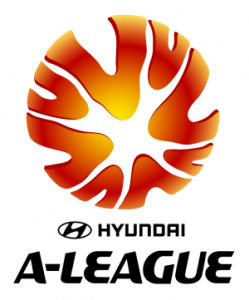
The pecking order in Australia’s sporting landscape has been largely predictable for decades.
Cricket in the summer and football in the winter have dominated their respective seasons, leaving a plethora of sports to co-exist in the shadows and fight for the remaining glimmers of the spotlight.
While AFL football continues to be an all-conquering giant, cricket has a serious challenger for summer supremacy: soccer.
Now into its eighth season, the A-League is casting a significant shadow of its own.
The 2012/13 campaign began last Friday with the Victory versus Heart Melbourne derby. That same night, Australia played the West Indies in the Twenty20 world cup semi-final.
With an average viewership of 129,000 compared to 111,000, the A-League not only out-rated the cricket, they also boasted a crowd of over 42,000 and were the highest rating program across all Foxtel channels.
Yes, the Twenty20 tournament was held in Sri Lanka and thus may have been somewhat out of sight, out of mind. Yes, it was at a later time slot than the derby. Yes, it could be argued that Australia’s summer of cricket doesn’t truly commence until the Baggy Green’s first test match on home soil.
But the fact is, the world game is gaining an increasing foothold in Australian hearts and minds, and it is reflecting in attendances, public interest and media coverage.
More than 93,000 fans attended the five A-League matches last weekend, beating the previous single-round aggregate record of 87,508 set in round three last season.
An average of 108,000 television viewers per match was the first six figure round average in the A-League’s history. The impressive numbers were a whopping 38 per cent increase from round one last season.
Recent marquee international signings have been central in the A-League’s rapid rise to prominence.
Former Aston Villa striker Emile Heskey and Japanese superstar Shinji Ono were acquired by the Newcastle Jets and Western Sydney Wanderers FC respectively.
Their high profiles and proven elite talent have created an instant buzz, yet they almost pale into insignificance by comparison to Sydney FC’s acquisition of Italian football royalty.
Juventus legend Alessandro Del Piero is arguably the biggest signing in Australia’s illustrious sports history, and has already been a worthwhile investment for soccer down under.
Hundreds of fans and media awaited the 37-year-old’s arrival at Sydney airport last month, and ahead of his first home match tomorrow against Heskey’s Newcastle, hopes of record-breaking crowds are realistically achievable.
Genuine foreign stars like Del Piero coupled with high caliber established players and Socceroo prospects are elevating the standard of the A-League to unprecedented heights.
Widespread excitement surrounding the competition has prompted positive exposure and should only enhance the willingness of quality players to be involved.
The entire image of soccer in Australia has evolved dramatically.
On Fox Sports News’s bulletin last Saturday morning, the results of the Melbourne derby were shown ahead of the Twenty20 world cup – a chronological triumph for soccer that would have been nothing more than fanciful during the troubled latter years of the National Soccer League.
In the defunct NSL, team rivalries were often fuelled by ethnicity rather than on-field exploits, and peripheral issues like flares were readily highlighted.
Two flares were released during last Friday’s derby, but it barely received a mention. The newsworthiness of the match itself was justifiably deemed more valuable.
Having solidified its foundations, the next step in the A-League’s development is to determine a free-to-air television rights deal.
According to the Sydney Morning Herald, the previous television rights deal, established in 2005, was worth an estimated $125 million over seven seasons.
A possible new five-year deal would potentially encompass over $200 million for five years and include a free-to-air component. SBS is the likely suitors given its long-term association with soccer, but other buyers may emerge.
If and when that arrangement occurs, the A-League’s status and ability to reach a national audience will grow exponentially.
Cricket is undoubtedly entrenched in Australian culture. There will be noteworthy crowds and media audiences just as surely as the sun will rise. But the sport is in an intriguing phase. Twenty20s, one-day internationals, test matches, domestic matches, the list goes on.
There is so much cricket available that the value and passion for victory seems to have been diluted. Conversely, the emotional investment in club football of any code is an unwaveringly meaningful commodity.
I stood in the Melbourne Heart cheer squad last week; trust me, the A-League evokes real feeling.
Cricket has always towered above the summer sports pack and will continue to command attention. But there is good reason for them to look over their shoulder.
If the A-League continues to blossom, we may be witnessing the beginning of a whole new ball game.
Paul Bastin is a third-year Bachelor of Media Studies student at La Trobe University. He is the current deputy sports editor for upstart. You can follow him on Twitter: @paulbastin10






